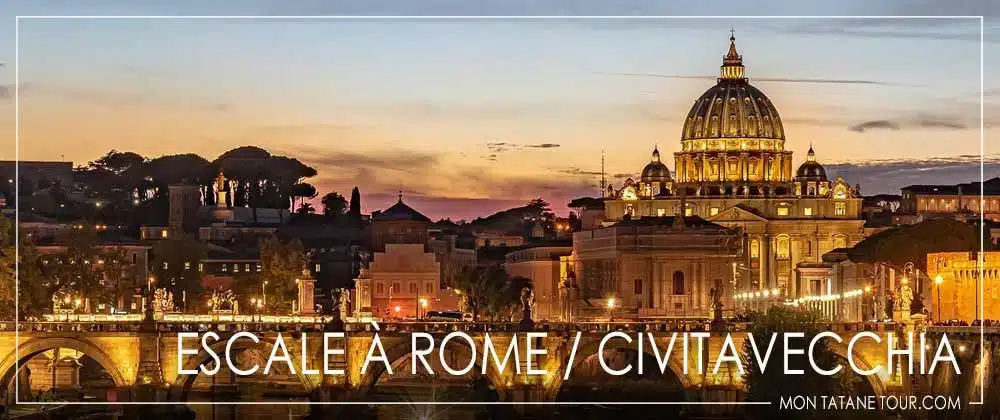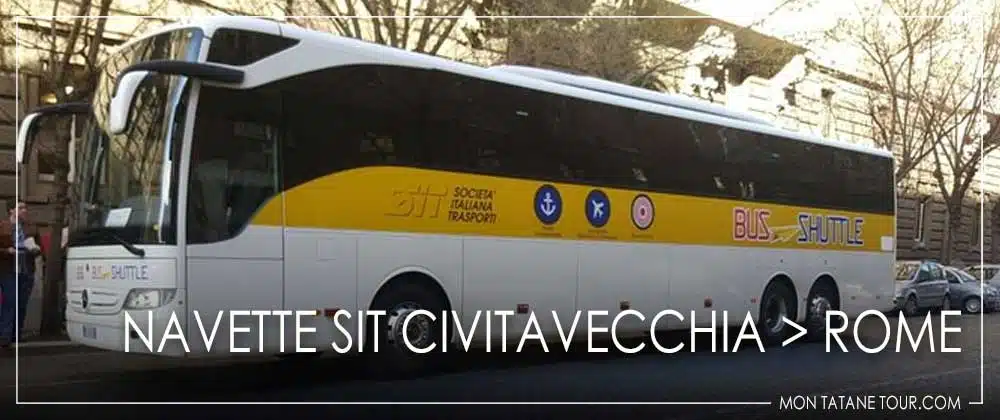Welcome aboard this comprehensive guide to “Cruise stopover in Rome”.
I’m Sarah ( or Miss Tatane 😛), passionate about cruising and travel. I’m here to share my experiences and advice with you, so you can experience each destination to the full.
Don’t forget to add us to your favorites if you’re thinking of cruising again! Our MTT site (yours) is constantly updated with new articles every week, as well as new destinations as we travel.
Cruise stopover in Rome
So, you have disembarked in Civitavecchia and you have chosen your mode of transport to get to Rome. Remember that Rome is 70 km from Civitavecchia, where your cruise docks. If you want to know how to get to Rome from your cruise port, it’s here (leave this page open, you will come back to it later 😉️️ ) ..
Now, let me guide you through the best things to do in Rome.
What to do in Rome
Paid activities
The only drawback I see in Rome is its high cost if you want to visit the Colosseum, the Sistine Chapel, etc.
When you travel as a family, outings quickly cost an arm and a leg . This is also why I offer the lowest prices on the internet on MTT. Don’t have too much budget? Rest assured by continuing to read my page you will find free activities.
Cruise stop in Rome – What to do?
Civitavecchia – Rome – The practical guide for a stress free stop!
Every month, thousands of cruisers use Montatanetour.com to prepare for their stopovers.
And Civitavecchia – Rome, it’s a mission: getting out of the port, finding the right transport, optimizing your time… 😵
Stopover in Rome: avoid the stress!
Traveling between Civitavecchia and Rome can quickly become a headache:
✅ How to get out of the port without wasting time?
✔ Which transport to choose to reach Rome quickly?
✅ Once in Rome, where to go and how to optimize your day, with real must-see suggestions you can’t miss?
✔ How to be sure to return to the port without stress or unnecessary spending?
Our digital guide answers all these questions!
- Detailed itineraries with precise instructions on the subway, stops to get off at, and directions to take
- Tested good addresses for a delicious break
- Step-by-step explanation of the return to the port
🔹 Everything is included in an ultra-complete guide for under €10. A small price to avoid struggling on-site and spending much more on an organized excursion.
✅ Download your guide now and enjoy your stopover with peace of mind!
Civitavecchia – Rome – The stopover that can quickly become a headache… unless you have our guide!
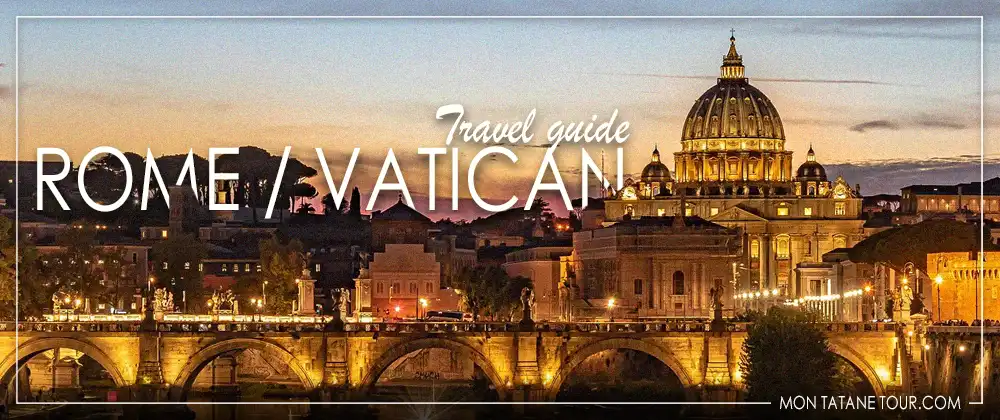
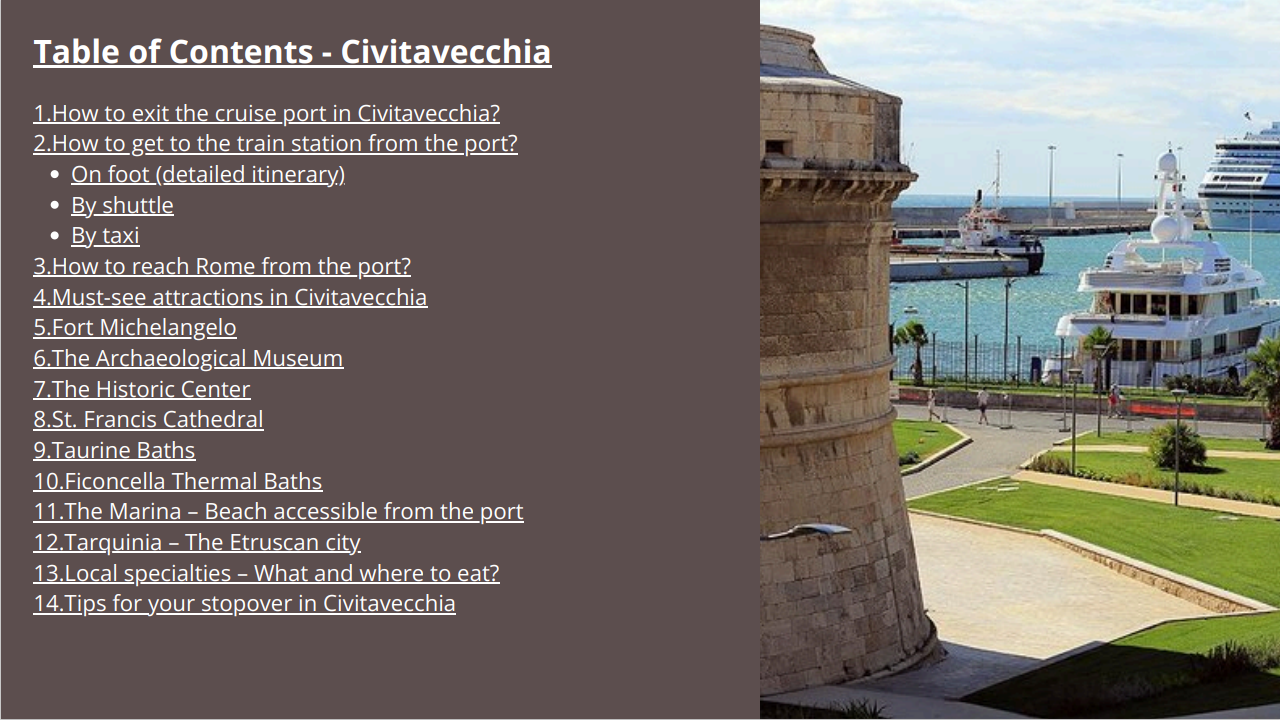
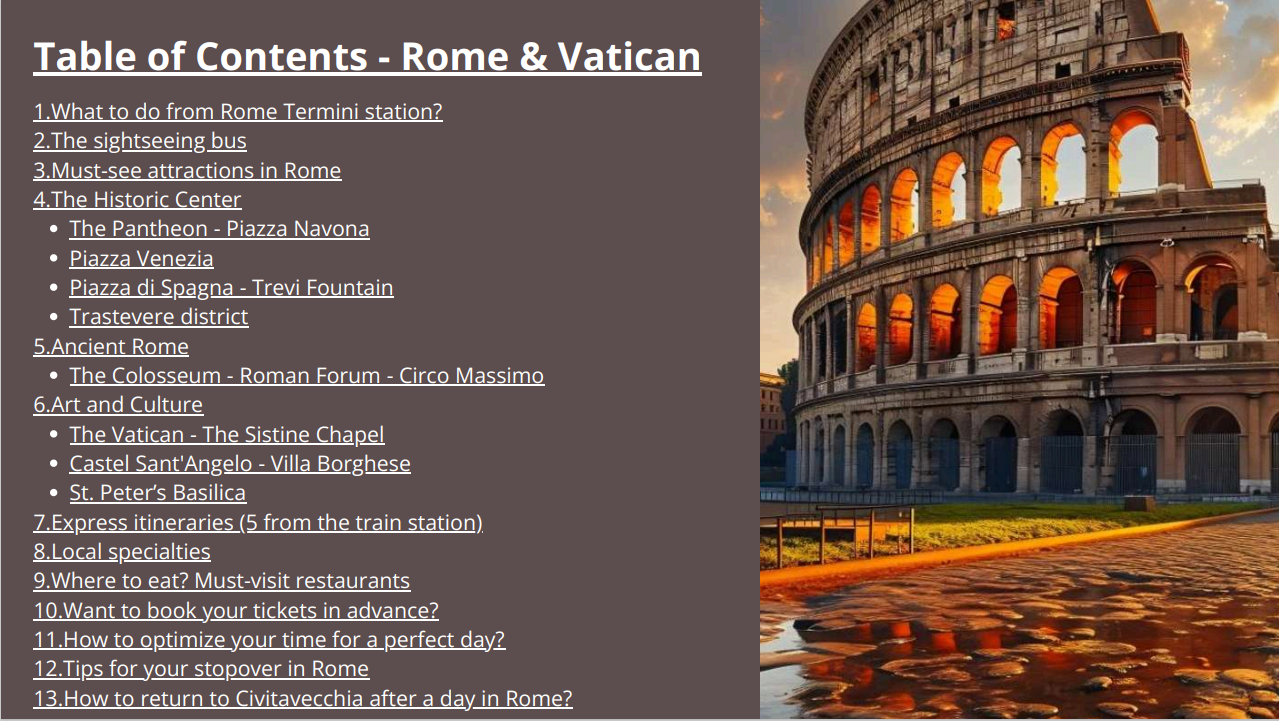

They tested and loved it! ⭐⭐⭐⭐⭐
✅ “TOP well-written, simple, and so many useful things that it changes, thanks, I recommend” – Michel and Marie
✅ “I waited, and today I get off, and I take your guide at 7:30 AM in Civitavecchia, and I congratulate it because for peace of mind, as you say, there is nothing better, because they are struggling with Costa to go to Rome, thank you for your precious help and a special thank you from our wallet” – Jules
✅ “We are delighted 🤩” – Chris
✅ “And this I BUY 🤣🤣🤣” – Laury
✅ “We wondered what route to take, and we decided to take the train. Once in Rome, we followed your suggested itineraries and chose number 3. It was fantastic, we enjoyed it, and we took beautiful photos, but unfortunately, we can’t share them in the comments, but that’s okay, we really enjoyed it, and all thanks to your guide. Thanks, my tatane tour 😘” – Joris
✅ “Awesome” – Céline
✅ “Really well done, super!!!” – Sam
The Coliseum
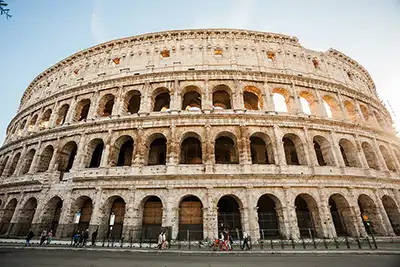
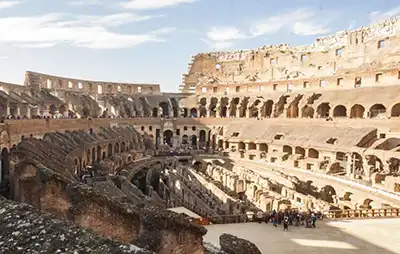
The Colosseum in Rome is one of the most iconic monuments in ancient history, a symbol of the greatness of the Roman Empire and a marvel of engineering. Here’s what you need to know about this exceptional site:
History and architecture
- Construction. Built between 70 and 80 AD during the reign of Emperors Vespasian and Titus, the Colosseum was originally an amphitheater for public spectacles, including gladiator fights.
- Dimensions. It is approximately 189 meters long, 156 meters wide and 50 meters high, with an estimated capacity of 50,000 to 80,000 spectators.
Points of interest
- Arena. The central arena, once covered in sand, was the site of spectacular fights between gladiators, as well as wild animal hunts and other entertainments.
- Underground system. Beneath the arena is a complex network of underground passages and animal cages used for shows.
Atmosphere and visits
- Visit. Visitors can explore the interior of the Colosseum, ascend to the upper floors to enjoy panoramic views of Rome, and check out the on-site archaeological exhibits.
- Audio guides. Available in multiple languages, the audio guides provide detailed information about the history, architecture and events that took place in the amphitheater.
Useful information
- Access. Located in the historic center of Rome, the Colosseum is within walking distance of many of the city’s main attractions. If you opt for the tourist bus, it drops you off in front.
Official schedules
- 8:30 a.m. – 4:30 p.m. until February 15
- 8:30 a.m. – 5:00 p.m. from February 16 to March 15
- 8:30 a.m. – 5:30 p.m. from March 16 to the last Saturday of March
- 8:30 a.m. – 7:15 p.m. from the last Sunday in March to August 31
- 8:30 a.m. – 7:00 p.m. from September 1st to September 30th
- 8:30 a.m. – 6:30 p.m. from October 1st to the last Saturday of October
Why visit the Colosseum?
- Witness to history. Explore a monument that tells the fascinating story of ancient Rome and its grandiose spectacles.
- Impressive architecture. Admire the advanced Roman engineering and grandeur of construction, which has inspired many architects throughout the centuries.
- Symbol of Rome. Discover an iconic symbol of the power and civilization of the Roman Empire, listed as a UNESCO World Heritage Site.
Guided tour of the Colosseum, Roman Forum and Palatine Hill
⭐⭐⭐⭐/ 43,077 reviews
Please note, this post may be full!
The pantheon
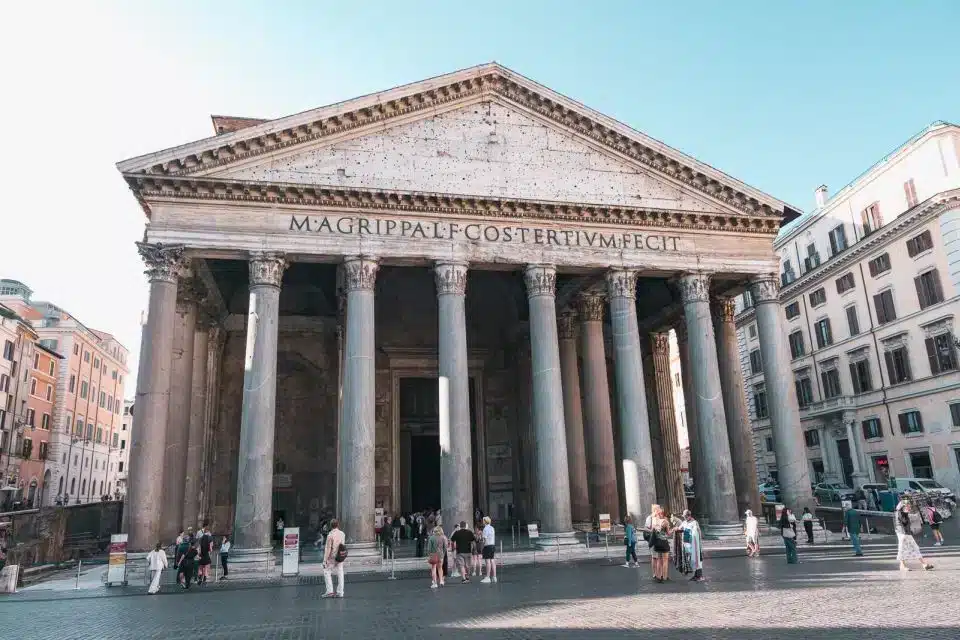
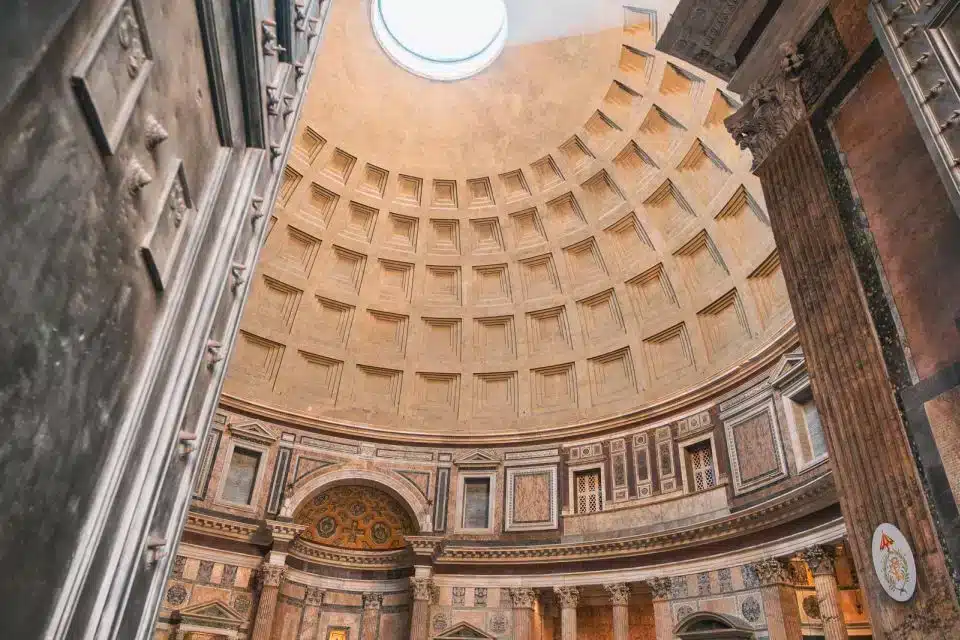
The Pantheon in Rome is one of the city’s most notable monuments, steeped in ancient history and architectural splendor.
- Architecture. The building features a monumental dome with an open oculus at the top, creating a source of natural light that illuminates the interior.
Points of interest
- Dome. The unreinforced concrete dome is a remarkable feat of engineering, representing one of the greatest achievements of ancient Roman architecture.
- Interior. The interior of the Pantheon is home to chapels, ancient statues and a solemn ambiance that reflects its sacred past.
Historical context
- Function. Originally a temple dedicated to all the gods of Rome, it was converted into a Christian church in the 7th century, which has preserved its remarkable architecture throughout the centuries.
- Influences. The Pantheon has inspired many architects and artists throughout the ages, from the Renaissance to the present day.
Atmosphere and visits
- New . To maintain and restore the Pantheon, the government has decided to charge a fee for access. Entrance 5 euros
- Visit. Explore the interior to admire the majesty of the dome and the architectural details that make it a symbol of Roman ingenuity.
Useful information
- Location. Located in the heart of Rome, near Piazza Navona and the Trevi Fountain, the Pantheon is easily accessible on foot or by public transport.
- Schedules. Open every day from 8:30 a.m. → 7:30 p.m. (Sunday closes at 6 p.m.).
The Vatican
Visit the Vatican , the spiritual capital of Catholicism. Admire St. Peter’s Basilica , a masterpiece of Baroque architecture, and the Vatican Museums , home to priceless artistic treasures, like the Sistine Chapel and its sublime frescoes.
Castel Sant’Angelo
A journey through time in the heart of Rome
The Castel Sant’Angelo, also known as Hadrian’s Mausoleum, is one of the most iconic monuments in Rome.
The building is a remarkable example of Roman and medieval architecture. It consists of several levels, each having been added or modified during different periods of its history.
Points of interest
- Hadrian’s Mausoleum . The lower part of the castle houses the original mausoleum, where the remains of Emperor Hadrian and his successors were buried.
- Sant’Angelo Bridge. This historic bridge, decorated with statues of angels sculpted by Bernini and his students, connects the castle to the city and offers a magnificent view of the Tiber.
- Passetto di Borgo. A secret fortified passage connects Castel Sant’Angelo to the Vatican, allowing popes to escape in times of danger.
- Panoramic terrace. The terrace offers spectacular views of Rome, including St. Peter’s Basilica, the Tiber River and the city skyline.
Historical context
- Use over the centuries. Originally built as a mausoleum, Castel Sant’Angelo was transformed into a military fortress in the Middle Ages. It also served as a papal residence and prison.
- Historical events. The castle played a crucial role during many historical events, including the siege of Rome and the captivity of Pope Clement VII during the sack of Rome in 1527.
Atmosphere and visits
- Permanent exhibitions. The castle houses several permanent exhibitions on its history, its transformations and the different periods it has gone through.
- Interior decorations. The castle’s rooms are decorated with frescoes, sculptures and period furniture, offering a glimpse of life in the Middle Ages and the Renaissance.
Useful information
- Access. The Castel Sant’Angelo is located on the right bank of the Tiber, near the Vatican City. It is easily accessible on foot, by bus or by metro (Ottaviano or Lepanto station).
- Schedules. The castle is open every day from 9 a.m. to 7:30 p.m. It is closed on January 1, May 1 and December 25.
- Tickets. Tickets can be purchased below.
Castel Sant’Angelo – skip-the-line ticket with audio app
The Sistine Chapel
Cruise stopover in Rome
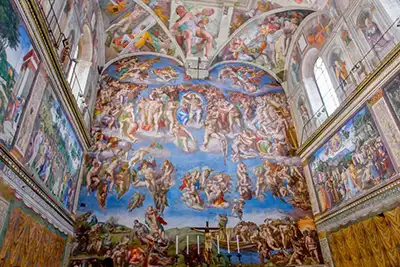
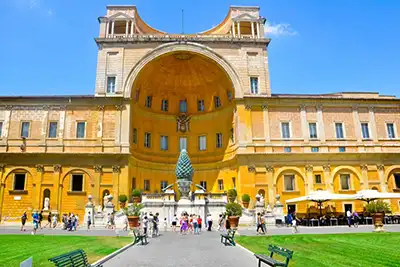
The chapel is a large rectangular room with a barrel vault, measuring approximately 40 meters long by 13 meters wide and 20 meters high. The dimensions of the chapel are based on those of Solomon’s Temple, as described in the Old Testament.
Points of interest
- Frescoes by Michelangelo. The chapel is famous for Michelangelo’s frescoes that cover the ceiling and altar wall. The work on the ceiling, carried out between 1508 and 1512, depicts nine scenes from the Book of Genesis, including the famous “Creation of Adam”. The “Last Judgment,” painted on the altar wall between 1536 and 1541, is another monumental masterpiece.
- Works by renaissance masters. Before Michelangelo began his work, other renowned Renaissance artists, such as Botticelli, Ghirlandaio and Perugino, had already decorated the walls of the chapel with frescoes depicting scenes from the life of Moses and the life of Christ.
Atmosphere and visits
- Unique experience. Standing under the ceiling of the Sistine Chapel and gazing at Michelangelo’s masterpieces is a breathtaking experience. The atmosphere is solemn and respectful, with guards reminding visitors to remain silent and not take photos.
Useful information
- Access. The Sistine Chapel is located in the Vatican Museums. To access it, you must enter through the museums and follow a route that passes through several galleries before reaching the chapel.
- Schedules. The Vatican Museums are open Monday to Saturday from 9 a.m. to 6 p.m., with last entry at 4 p.m.
- Tickets. It is strongly recommended to purchase your tickets online in advance to avoid long lines. Tickets include access to the Vatican Museums and the Sistine Chapel.
Why visit the Sistine Chapel?
- Renaissance art. Admire some of the most famous and impressive works of art from the Renaissance.
- Spiritual heritage. Discover a place of great importance to Christian history and spirituality.
- Timeless beauty. The Sistine Chapel is a testimony to the beauty and power of art, capable of transcending time and touching visitors of all beliefs and cultures.
Sistine Chapel and museums
⭐⭐⭐⭐/ 104,055 reviews
Please note, this post may be full!
Sightseeing bus in Rome
Cruise stopover in Rome – A great time saver
⭐⭐⭐⭐/ 9 719 reviews
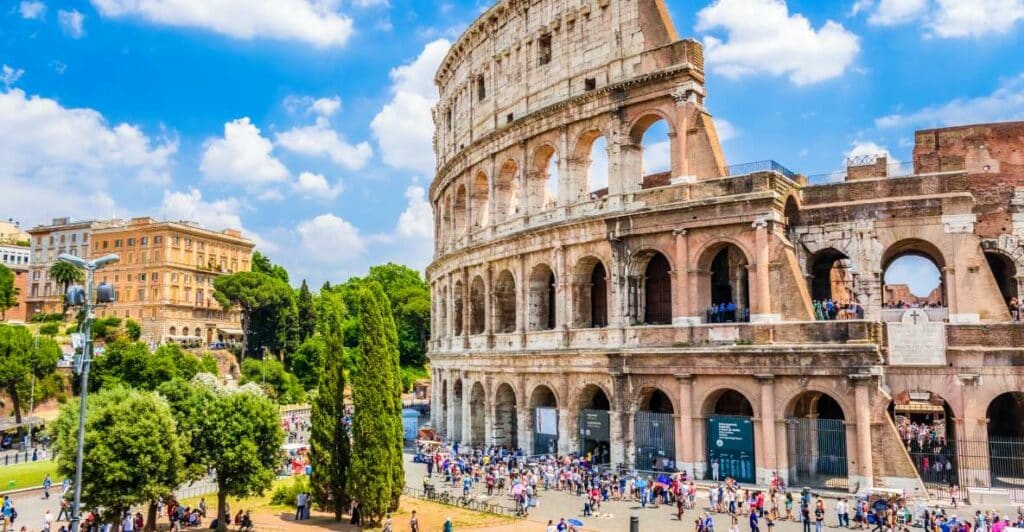
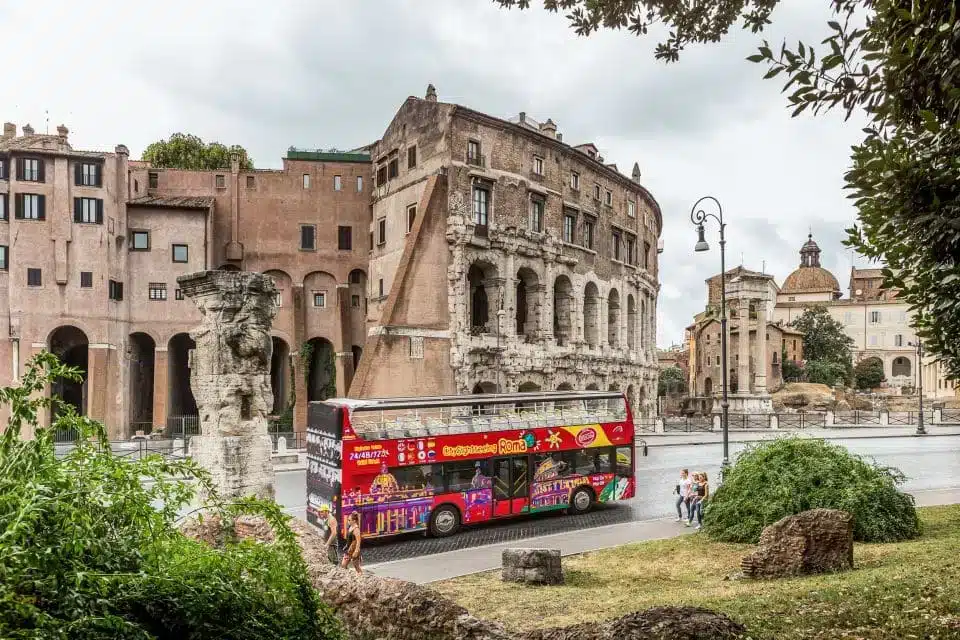
Please note, this post may be full!
Free activities in Rome
Cruise stopover in Rome
Below are the free activities in Rome. Even if your budget is limited, you can still enjoy many interesting attractions in the Eternal City.
- Trevi Fountain
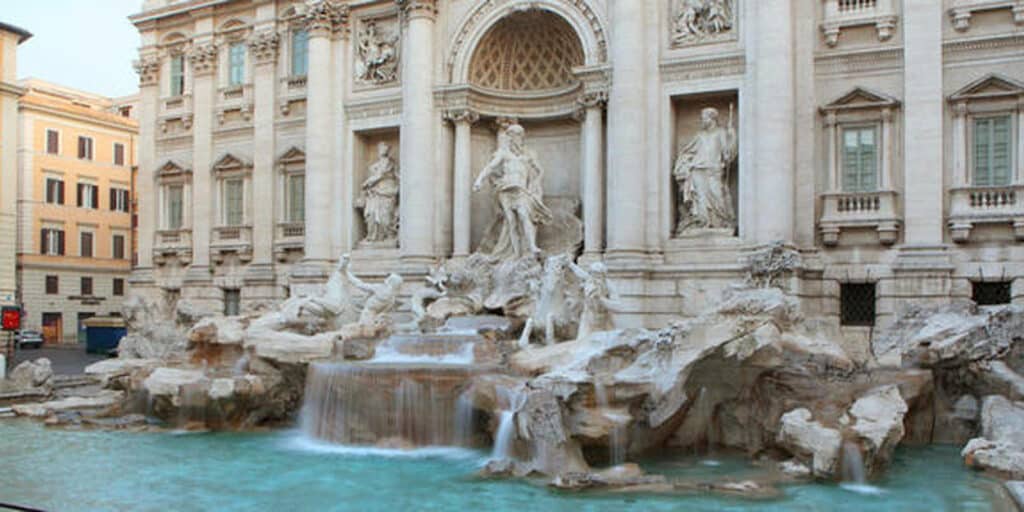
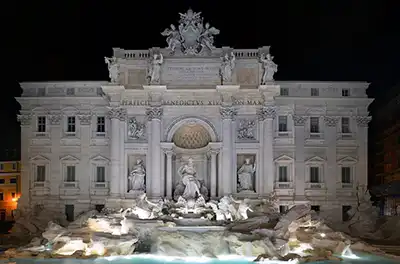
Throw a coin into the Trevi Fountain , one of the most famous in the world, and make a wish. Admire its baroque beauty and let yourself be carried away by the magical atmosphere of the square. Remember to respect the area and not throw away any objects other than coins!🙏
- Piazza Navona
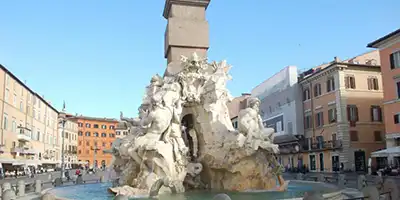
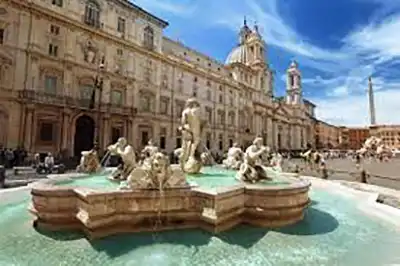
Take a stroll through Piazza Navona , one of the most beautiful squares in Rome. Admire its baroque fountains, street performers and lively atmosphere. Take advantage of the cafes and restaurants to enjoy a delicious Italian ice cream in the shade of the trees.
- Trastevere , a bohemian and charming neighborhood
Lose yourself in the picturesque streets of Trastevere , a bohemian and charming neighborhood. Discover its craft shops, typical restaurants and lively bars. Atmosphere guaranteed!
- Magnificent churches
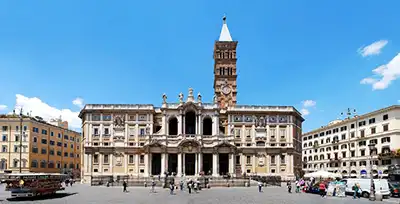
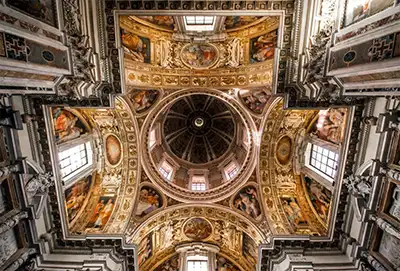
The city is full of magnificent churches, most of which are free. Don’t miss the Basilica of Saint John Lateran (note that you have to pay to visit the cloister) or the Basilica of Saint Mary Major.
- Parks and gardens
Enjoy a day outdoors in one of Rome’s many parks and gardens. Villa Borghese offers vast green spaces, shaded paths and even a small lake where you can rent a rowing boat.
- Free museums
Some museums offer free entry days or free hours. Find out in advance if you can take advantage of this. For example, on the first Sunday of each month, many Italian state museums offer free entry.😮
Important Tips
Cruise stopover in Rome – Optimize your time and make the most of your visit
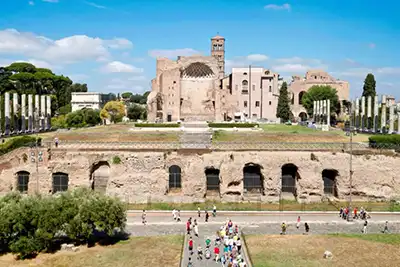
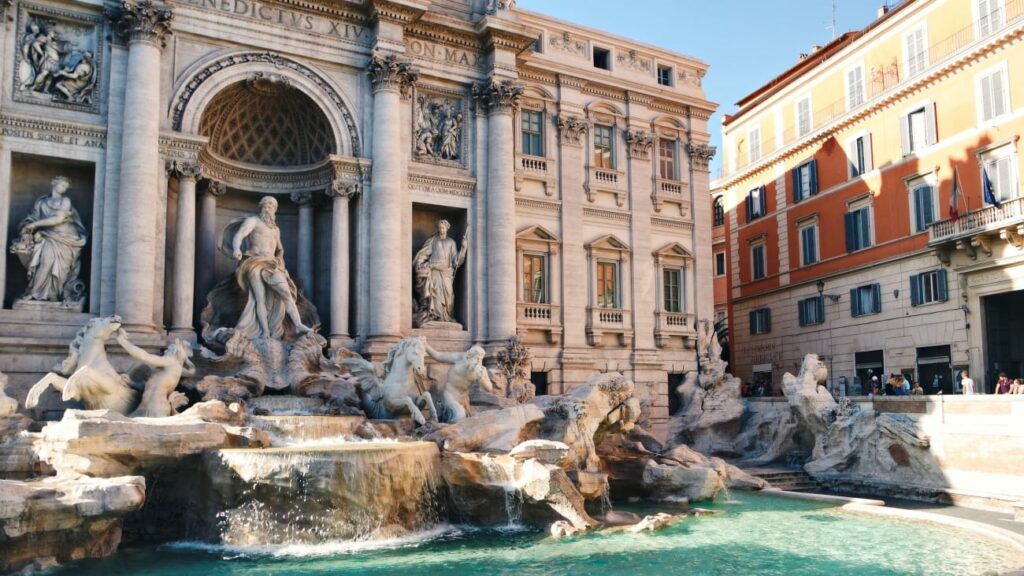
Rome opens its doors to you for an unforgettable stopover! But with a cruise’s limited time, it’s crucial to plan your visit wisely to make the most of the city’s treasures.
Here are some valuable tips to optimize your stopover in Rome:
Define your priorities
- What do you absolutely want to see? Colosseum, Vatican, Trevi Fountain?
- What are your hobbies? History, art, architecture, gastronomy?
- How long do you have in Rome? In general, we have around 5 hours and 30 on site with transfer. This gives us a comfortable margin to explore the city without risking missing our return to the boat.
Based on your answers, make a list of sites you want to visit as a priority. Don’t try to do everything, because you risk spending your time running from one place to another without really enjoying it.
Find out about opening times and queues
- Some sites, like the Colosseum and the Vatican, are very busy. Check opening times and plan to book your tickets in advance to avoid long lines.
- Tourist passes can also be interesting to save time and money.
Optimize your trips
- Choose walking for short distances. Rome is a very pleasant city to explore on foot.
- Choose the tourist bus if you want to see all the tourist places and thus save time!
- For longer distances, use public transport. The bus and metro network is efficient, affordable but often shielded.😱
- Taxis can be useful to save time, but be careful they are more expensive. Do not hesitate to negotiate the price of the ride before getting on because many people overdo it.
Enjoy your free time
- After visiting the must-see sites, take the time to stroll the streets of Rome.
- Discover authentic neighborhoods, like Trastevere or Monti.
- Enjoy a delicious meal at a local restaurant.
- Taste Italian gelato, a true institution!
Italian sample sentences
Cruise stopover in Rome – A few words of Italian
Learning a few basic Italian words before your layover in Rome will allow you to better communicate with locals and add a touch of authenticity to your trip .
Here are some useful phrases and expressions to get you started:
Salutations:
- Good morning. Buongiorno (pronounced: bouonjourno)
- Hello (informal). Ciao (pronounced: tchao)
- Bonsoir. Good evening (pronounced: bouonasèra)
- Bye. Arrivederci (pronounced: arivédèrtchi)
- See you soon. A presto (pronounced: a presto)
Courtesy:
- Please. Per favore (pronounced: pèrfavòré)
- THANKS. Grazie (pronounced: gràtssié)
- It was nothing. Prego (pronounced: prègo)
- Excuse me. Mi scusi (pronounced: mi skouzi)
- Pardon. Scusi (pronounced: skouzi)
Questions:
- Pouvez-vous m’aider?. Can you help me? (pronounced: can you help me?)
- Where do you find…?. Where is it…? (pronounced: where is it?)
- How much costs…?. How much does it cost…? (pronounced: kwánto kòsta ?)
- Do you speak English ?. Speak English? (pronounced: parla ingleze?)
- I don’t understand. Non capisco (pronounced: nòn capisco)
Useful phrases:
- I would like… Vorrei… (pronounced: vorrei)
- I’m sorry). Mi dispiace (pronounced: mi dispiace)
- I don’t know. Non so (pronounced: nòn so)
- Can you repeat?. Can you repeat? (pronounced: può ripetère?)
- Thank you so much. Grazie mille (pronounced: gràtssié mille)
By learning these few simple words and expressions, you will be able to get by in most everyday situations in Rome. Don’t hesitate to practice your Italian with the locals, they will be happy to help you and appreciate your efforts.
Remember that learning a language takes time and practice. Don’t be discouraged if your accent sucks 🤭The most important thing is to show enthusiasm and willingness to communicate .
I hope these tips will be useful for your stopover in Rome!
Transfer options
Cruise stopover in Rome
Do you want to know how to get to Rome from Civitavecchia?
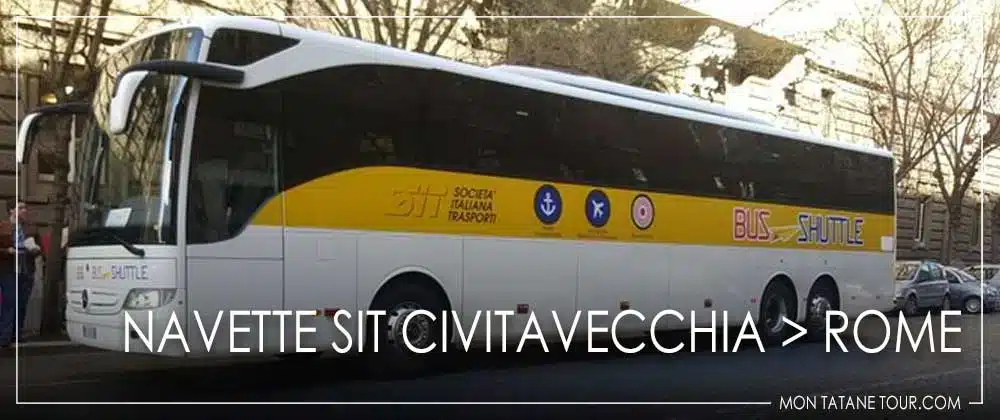
To discover this article, click on the image 👆🏼
Visit Rome
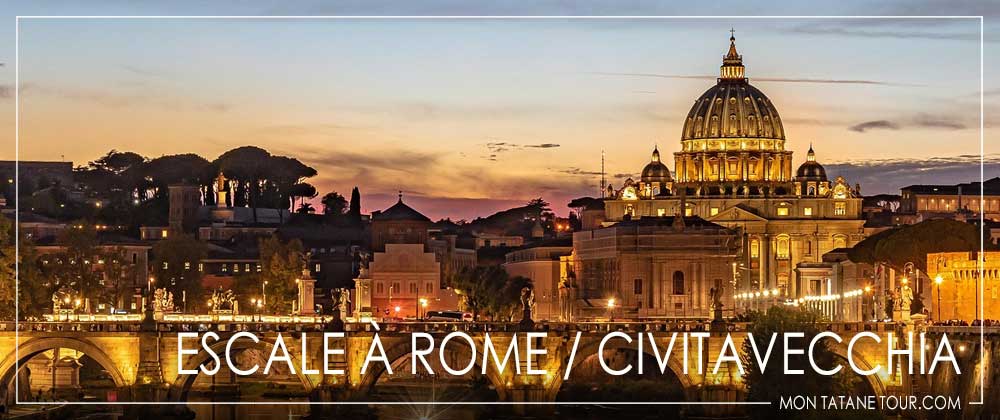
To discover the complete and detailed page, click on the image!
Cruise stopovers in the Mediterranean
Detailed stopovers port by port
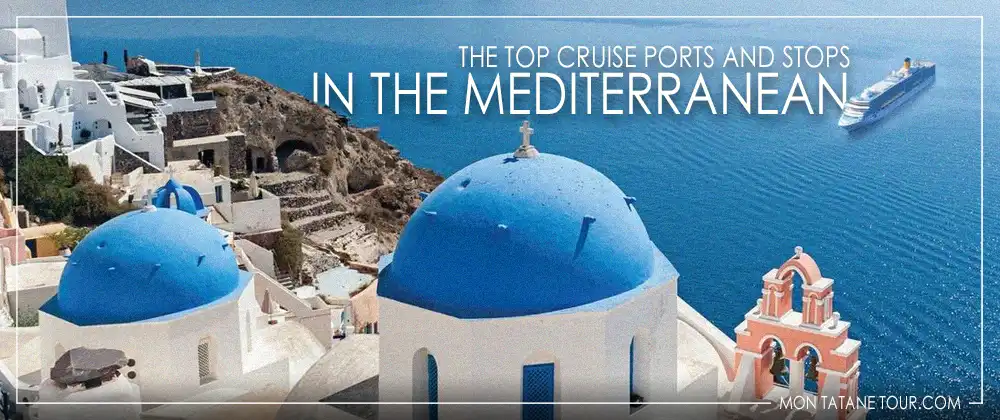
Around the world
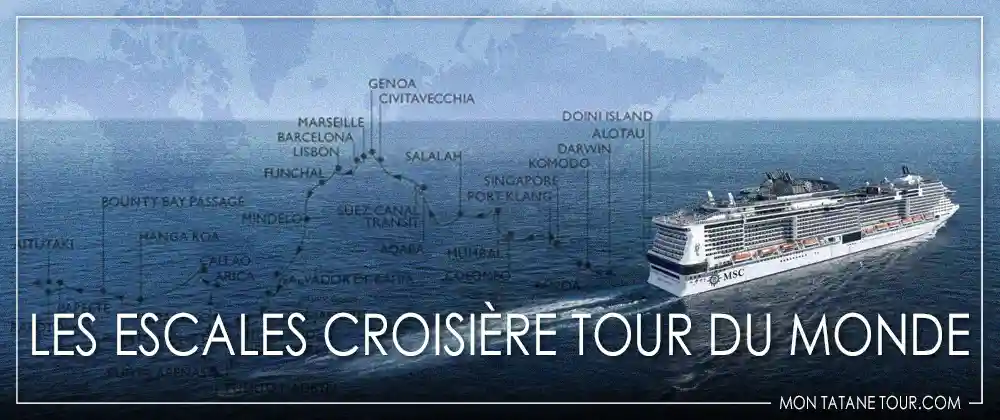
In the Caribbean
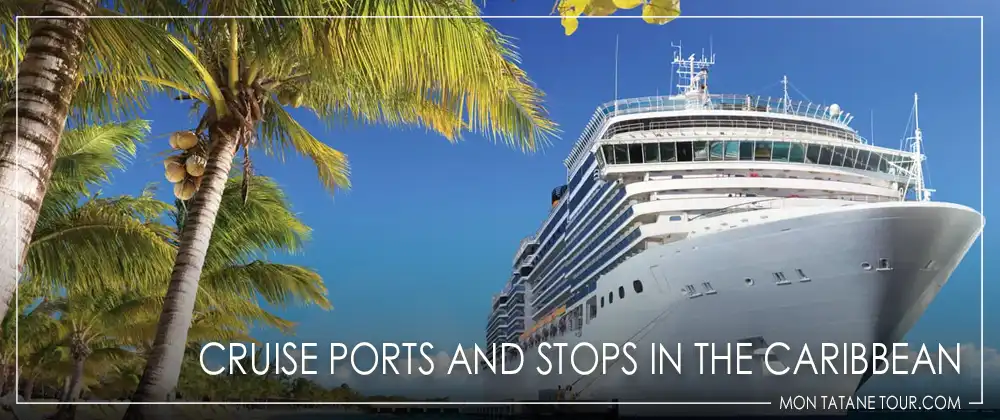
In North America
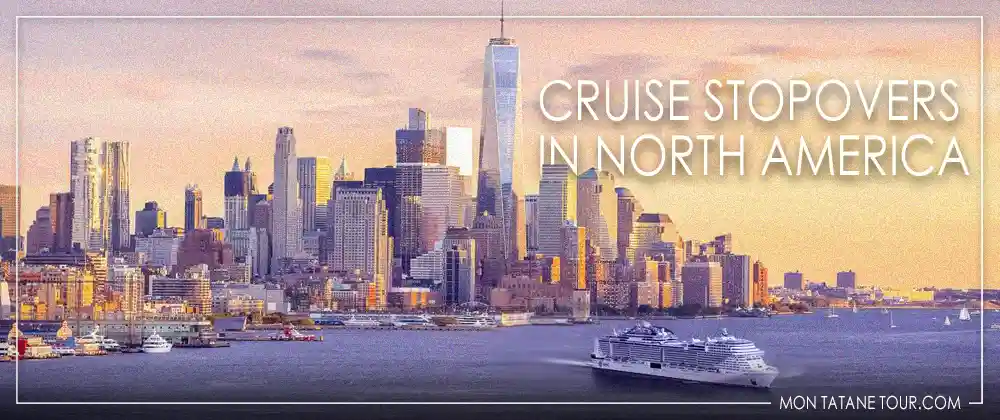
In the Fjords

Cruise guide
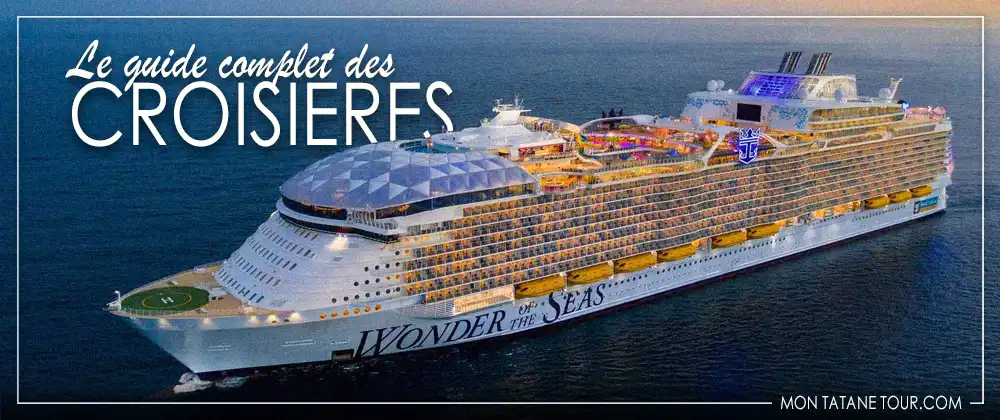
MTT wishes you the most wonderful visit to Rome


